Written by Zijun Wei, J-1 Exchange Student
When I first set my sights on visiting Yellowstone National Park, I knew it was going to be one for the books. Yellowstone is not just another national park—it’s a world-renowned destination that draws millions of visitors every year. It’s the kind of place where you can stand in awe of geysers shooting water into the sky one moment, and then spot a herd of bison grazing peacefully the next. But as soon as I arrived, I realized that this place was so much more than I expected. It’s a living, breathing landscape full of natural wonders, diverse wildlife, and a history that dates back millions of years.
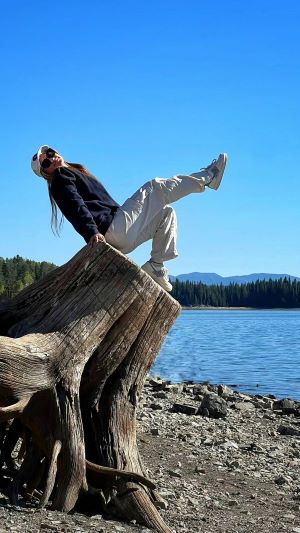
Yellowstone: A Geological and Historical Marvel
Yellowstone is a geological marvel, sitting atop one of the largest active volcanic systems in the world. Imagine this—beneath your feet, there’s a supervolcano, responsible for shaping the park’s geothermal features. If that doesn’t make you pause and appreciate the power of nature, I don’t know what will! This volcanic activity is why Yellowstone boasts over 10,000 geothermal features, including geysers, hot springs, fumaroles, and mudpots, all bubbling, steaming, and painting the landscape in vibrant colors.
The park was officially established in 1872, making it the world’s first national park. That was a landmark moment in conservation history. But before that, Yellowstone’s dramatic scenery had been home to Native American tribes for over 11,000 years. They were the first to witness the thermal features and hunt the abundant wildlife here. European explorers eventually stumbled upon it in the 19th century, and their stories of geysers and boiling rivers were met with skepticism until formal expeditions confirmed the park’s existence.
A Wildlife Wonderland
Yellowstone’s wild, rugged terrain isn’t just a haven for geology lovers, it’s also a paradise for wildlife enthusiasts. I found myself constantly scanning the horizon, hoping to catch a glimpse of the park’s famed animals, and trust me, there were plenty of opportunities. This place feels like a natural wildlife safari in the heart of America.
Let’s start with the most iconic resident—the bison. These massive creatures are a symbol of the park, often seen lumbering across meadows or crossing roads at their own leisurely pace. Yellowstone is home to one of the last free-ranging bison herds in the U.S., and spotting these hulking animals in their natural habitat was an unforgettable experience.
Wolves, another one of Yellowstone’s more elusive inhabitants, were reintroduced to the park in 1995 after being absent for decades. Today, the park is home to a healthy population of gray wolves, and while I didn’t personally spot one, just knowing they were out there added to the sense of wildness. Grizzly bears also roam the park’s forests, and while encounters are rare, seeing even a paw print in the mud can be an exhilarating reminder that you’re sharing this land with such magnificent creatures.
For bird lovers, Yellowstone is a sanctuary as well. Bald eagles, osprey, and peregrine falcons soar above the park’s rivers and canyons. And if you look closely, you might spot smaller animals like foxes, coyotes, and river otters, each playing its part in the park’s intricate ecosystem.
It’s not just the animals that make Yellowstone special—its flora is just as fascinating. The park’s forests are dominated by lodgepole pines, a tree species adapted to thrive in the aftermath of wildfires. Fire is actually a natural part of Yellowstone’s life cycle, and while it may seem destructive, these trees rely on fire to release their seeds. As you walk through Yellowstone’s trails, you’ll also come across Douglas fir, Engelmann spruce, and aspen trees, all contributing to the diverse landscape.
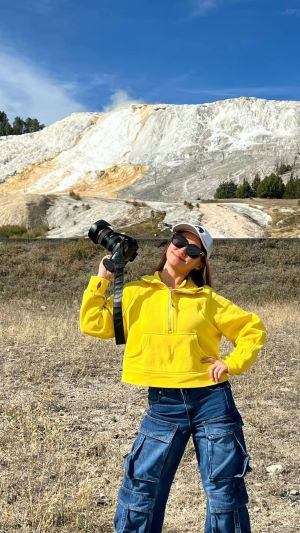
Attractions in Yellowstone: The Must-See Spots in Two Days
Yellowstone is enormous, covering nearly 3,500 square miles, so planning your visit around the park’s top attractions is key. Most visitors, myself included, follow a loop in the shape of an 8, which is the perfect way to explore the park’s main sights without missing a beat.
Start with the Lower Loop: The southern half of the figure-8 loop is packed with many of Yellowstone’s most famous geothermal features.
Old Faithful Geyser: Of course, no trip to Yellowstone is complete without visiting Old Faithful. This famous geyser erupts roughly every 90 minutes, shooting a tower of steam and water high into the air. The eruptions are spectacular, but don’t stop there—the Old Faithful area is surrounded by other incredible features.
Upper Geyser Basin: This area is home to the largest concentration of geysers in the park. Stroll along the boardwalks to see smaller, but still impressive geysers like Castle Geyser, Riverside Geyser, and the stunning Morning Glory Pool, with its deep blue center surrounded by rings of yellow and green.
Midway Geyser Basin and the Grand Prismatic Spring: A short drive north from Old Faithful will bring you to the Midway Geyser Basin, home to the Grand Prismatic Spring. This is the park’s largest hot spring and perhaps its most photographed. The spring’s vibrant colors—deep blues, fiery reds, and neon oranges—are created by heat-loving microorganisms, making it look like a giant rainbow pool.
Fountain Paint Pot: Just a little further along the loop, you’ll find the Fountain Paint Pot area. The bubbling mudpots here are particularly mesmerizing, with their pastel hues created by different minerals.
Continue to the Upper Loop: Once you’ve explored the Lower Loop, make your way north into the Upper Loop, where the landscape shifts to rugged canyons and rivers.
Grand Canyon of the Yellowstone: One of the park’s most dramatic sights is the Grand Canyon of the Yellowstone. This massive gorge, carved by the Yellowstone River, is home to both the Upper and Lower Falls. The Lower Falls, at 308 feet, is particularly impressive and provides jaw-dropping views as it crashes into the canyon below.
Hayden Valley: Between the canyon and Yellowstone Lake, you’ll pass through Hayden Valley, a prime spot for wildlife viewing. This wide, open valley is home to bison, elk, and sometimes even grizzly bears.
Mammoth Hot Springs: Continue to the northern part of the loop to visit Mammoth Hot Springs, an entirely different geothermal area. The hot springs here have formed intricate terraces of calcium carbonate, creating a series of layered steps that look like frozen waterfalls.
Lamar Valley: If wildlife is your priority, a visit to Lamar Valley in the northeastern corner of the park is a must. Known as the "Serengeti of North America," this valley is one of the best places to spot wolves, bears, and large herds of bison.
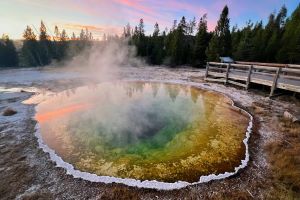
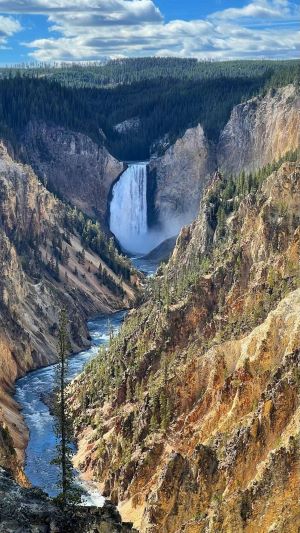
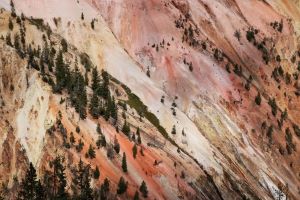
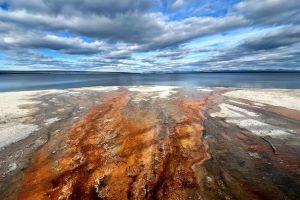
How to Visit Yellowstone: Practical Tips for Your Adventure
Getting to Yellowstone requires a bit of planning, but it’s worth every effort. Most people, like me, fly to Salt Lake City International Airport. From there, it’s about a five-hour drive to the park’s West Entrance. Along the way, you’ll pass through some stunning landscapes, including the scenic Grand Teton National Park. If you have extra time, I highly recommend stopping there for a hike or even just a quick photo op. The Teton range, with its jagged peaks and crystal-clear lakes, is simply breathtaking.
Once you reach Yellowstone, renting a car is the best way to get around. The park is vast, and driving gives you the flexibility to explore at your own pace. If you’re planning a two-day trip like I did, staying at West Yellowstone, a charming little town just outside the park’s West Entrance, is a great option. It offers plenty of accommodations, restaurants, and easy access to the park.
While driving through Yellowstone, keep in mind that the roads form the famous 8-shaped loop, which makes navigating simple. You can follow the lower loop on one day and the upper loop the next, ensuring you hit all the key spots without feeling rushed.